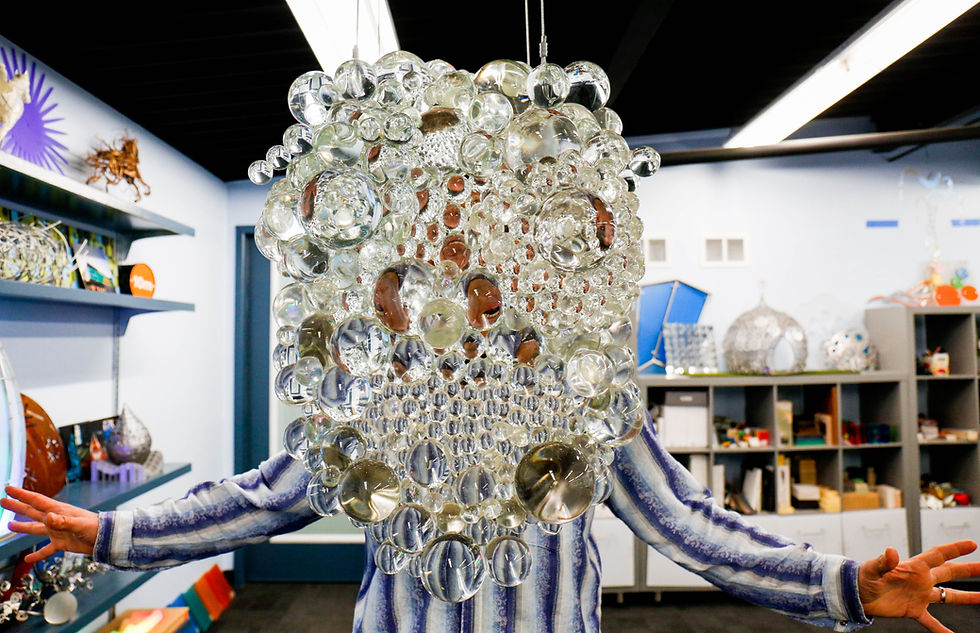A Solar and Stellar Observatory
- Creative Machines

- Sep 22, 2021
- 3 min read
Updated: Dec 14, 2021
PART II OF THE FIFTH SPACE SERIES —
I am currently developing a solar and stellar observatory sculpture: a tiny model of the universe influenced by historic observatories such as Jantar Mantar, Uraniborg, and Stonehenge. Like each of these, this sculpture is an observatory that you walk into to help you feel your connection to the visible universe.

Imagine you’ve spent some hours or even days hiking to reach this sculpture. You’ve had time to decompress, walking has worked wonders on your mind and you may have spent time with a small group of other people – the perfect way to reacquaint yourself with how humans used to spend much of their time.
You reach the observatory during daylight. There is a lower area that helps visualize the rays from the sun. Moveable mirrors and dichroic filters bounce sunlight throughout the shaded space and make the rotation of the earth apparent over time. To make the rays of the sun visible, a glass sphere concentrates those rays to burn sage or juniper, making a thin smoke that renders light rays visible. In developing the lower portion of the observatory, the crucial moment I see is when the sun moves to a position where participants have aligned mirrors so that the central crystal glows brightly and the beams of light are made visible by smoke.

As the sun moves lower in the sky, the interest shifts to the upper level of the observatory.
Overhead, great structural arcs depict the ecliptic planes formed as the earth orbits the sun at the solstices, the two equinoxes and every day in between. Dichroic filters cast colored shadows on the ground determined by the seasons. The entire structure is built around a tube that parallels the earth’s north-south rotational axis and through which the north star can be seen.

The upper portion of the observatory lifts people above the immediate topography of rocks and brush and physically orients them to the earth’s position in the universe. The top of the railing represents the horizon. The position where the sun crosses this railing as it rises and sets relates to the date – just as it did for tens of thousands of years for many world cultures and in many paleolithic observatory structures. The arcs overhead guide our understanding of the paths along which the sun, moon and planets appear to move throughout the day and night at different times of the year. These arcs are derived directly from the earth’s rotation.

At night, an accurate spherical model of the celestial sphere shows the location and name of all the major constellations. As participants rotate this model to the time and date, a point source light at the exact center of the sphere inside project the accurate position of the constellations – not just those visible at the current time, but also what people on the other side of the world are seeing, and what constellations can be expected to rise over the next several hours. You start to feel the earth floating and rotating within the universe.


We live much of our lives inside structures already, but sometimes we need to properly orient ourselves. This observatory provides that opportunity. When we are outdoors, we live within the ‘room’ formed by the acre of so around us that we can see and hear. And in a larger sense we live within the room of the earth and the bigger room of the known universe. The celestial sphere, the imaginary surface on which the stars and planets live, is the wallpaper of that room. Getting into these sculptures is like stepping inside a little ‘room’ that helps you understand how to inhabit the larger ‘room’ of our planet or universe or biome in a different way.
By Joseph O'Connell




Comments